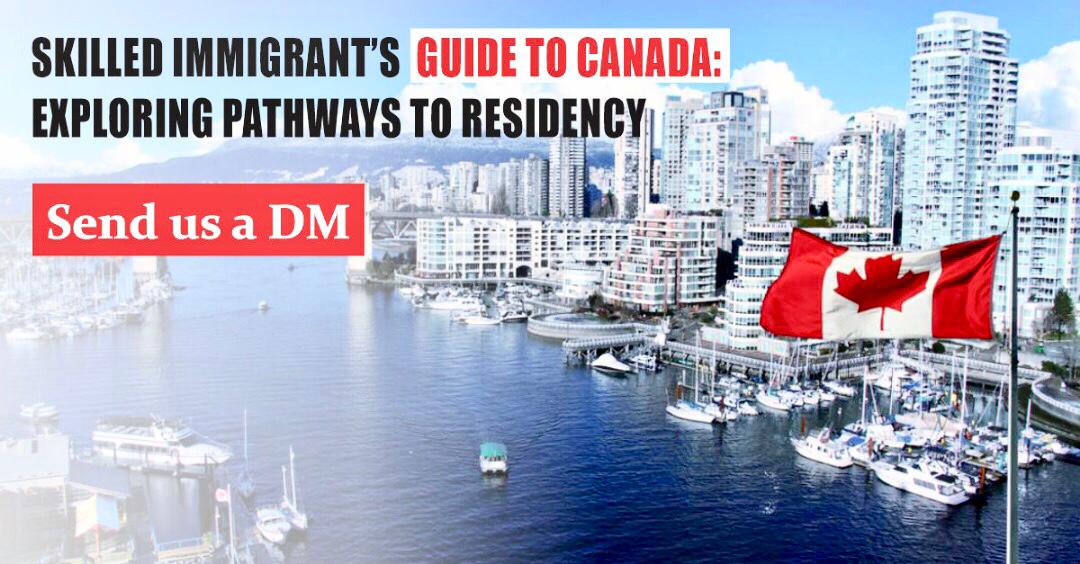Considering being a resident in Canada as a skilled worker? You're not isolated in this, and your feelings make total sense. With its boasting economic stability, world-class cities, and an immigrant-friendly environment, Canada has paved the way to being one of the top-notch choices for professionals who are in search of greener pastures. This realm of commonwealth has set its standard as one of the top destinations for foreign professionals, thanks to its supportive immigrant framework, strong economic structure, and ongoing need for professionals in specialized areas like healthcare, tech, construction, and finance. Making it stand out as the top choice for career-driven immigrants aiming to enhance their professional growth and personal well-being.
Sincerely, the process can be quite complex, right? With various options and lengthy steps, it can be difficult to know where to begin. That is why we have put together this simplified guide to help make everything clearer and to direct you on the main ways or processes you can move to Canada as a foreign professional.
1. The Express Entry System – Fast and Popular
This is a well-known method for skilled workers to immigrate to Canada. The process is rapid, online, and competitive. It pertains to the education category-based draws implemented within Canada's Express Entry system, which was established to prioritize skilled professionals in the education sector for Canadian permanent residency.
Express Entry includes three programs:
- Federal Skilled Worker Program (FSWP) is a Canadian immigration program that allows skilled workers with foreign work experience to become permanent residents.
- Federal Skilled Trades Program (FSTP) is a Canadian immigration program that allows skilled tradespeople to become permanent residents.
- Canadian Experience Class (CEC) is an immigration program for individuals with prior Canadian work experience who wish to become permanent residents.
Applicants are evaluated based on criteria such as work experience, language skills, and educational background. A higher ranking significantly improves the chances for foreign professionals to receive an invitation to apply for permanent residency.
2. Provincial Nominee Programs (PNPs) – The Local Route
Planning on staying long-term in a province like Ontario or British Columbia? Either of these provinces has its peculiar programs drafted out in order to invite skilled professionals based on what is needed locally. This gives these provinces and territories the leverage to nominate candidates for permanent residency based on their professionalism and their capacity to contribute to the economic life of the communities.
Suppose you are a professional in an in-demand sector in a specific province; this might be a winning edge, and also, being selected by a province would elevate your chances in the Express Entry system as well.
3. Atlantic Immigration Program – For East Coast Vibes
The Atlantic immigration program (AIP) is a migration channel created to recruit qualified professionals and foreign-educated graduates to the four Atlantic provinces: New Brunswick, Nova Scotia, Prince Edward Island, and Newfoundland and Labrador. Considering a move to a more peaceful, ocean-side, and family-friendly environment? Canada's Atlantic Provinces (Nova Scotia, New Brunswick, etc.) are recruiting trained and competent personnel. This program simplifies relocation by offering employment and providing support for foreign employees from their future employer.
4. Rural and Northern Immigration Pilot – Small Communities, Big Opportunities
The Rural and Northern Immigration Pilot (RNIP) is a community-led initiative. It's created to extend the advantages of labour-based immigration to small-scale settlements by designing a permanent residency route for foreign professionals who are willing to work and live in one of the contributing communities. If you don't mind living beyond the urban centres, this program links skilled professionals with rural or regional areas across Canada that need experts. It's a more tailored method and also an excellent opportunity for a fresh start in a place where your expertise is duly appreciated.
5. Job Offers & LMIA – Getting in Through Work
LMIA (Labour Market Impact Assessment) is a required document that Canadian employers must obtain to be eligible to hire foreign workers. A positive LMIA demonstrates that no qualified Canadian worker or permanent resident is available for the role, and the employer has indicated a shortage of foreign workers.
On a few occasions, just being offered a genuine job can make everything different. If a Canadian employer is ready to assist you through the LMIA, you can then seek approval for a work permit, and you could eventually qualify for PR.
CONCLUSION
Canada offers various pathways for foreign experts, and the best option depends on your work experience, education, profession, and language skills. Navigating the process can be challenging, but with the right support and resources, you can find a path to becoming a permanent resident. Regardless of your profession or background, there's likely a framework to enable you to move to Canada, starting with understanding your options. We understand this process can be overwhelming and intimidating. You don't have to do it alone. Whether you're still exploring your options or ready to move forward, we're here to help.


